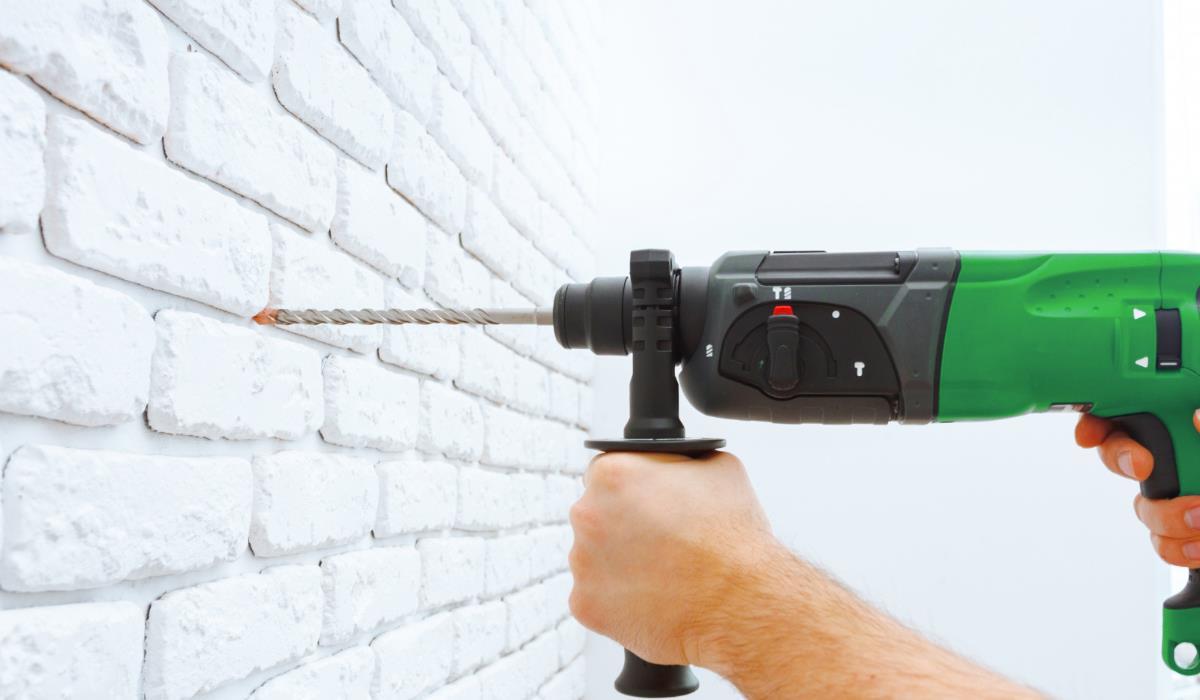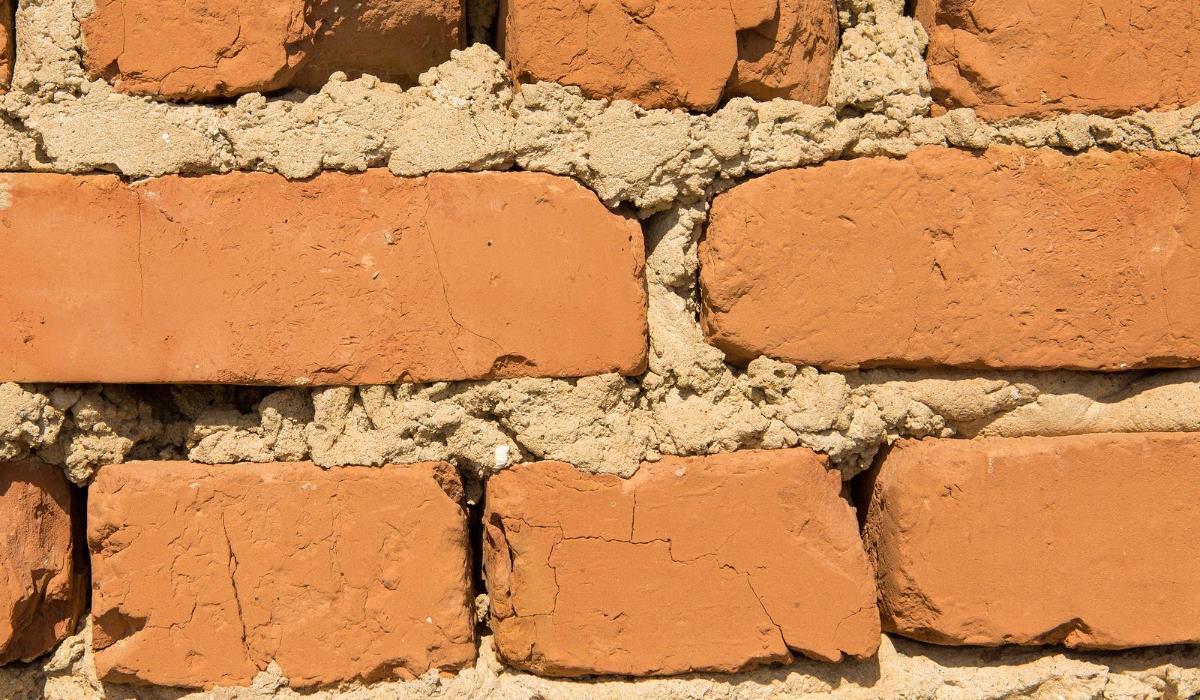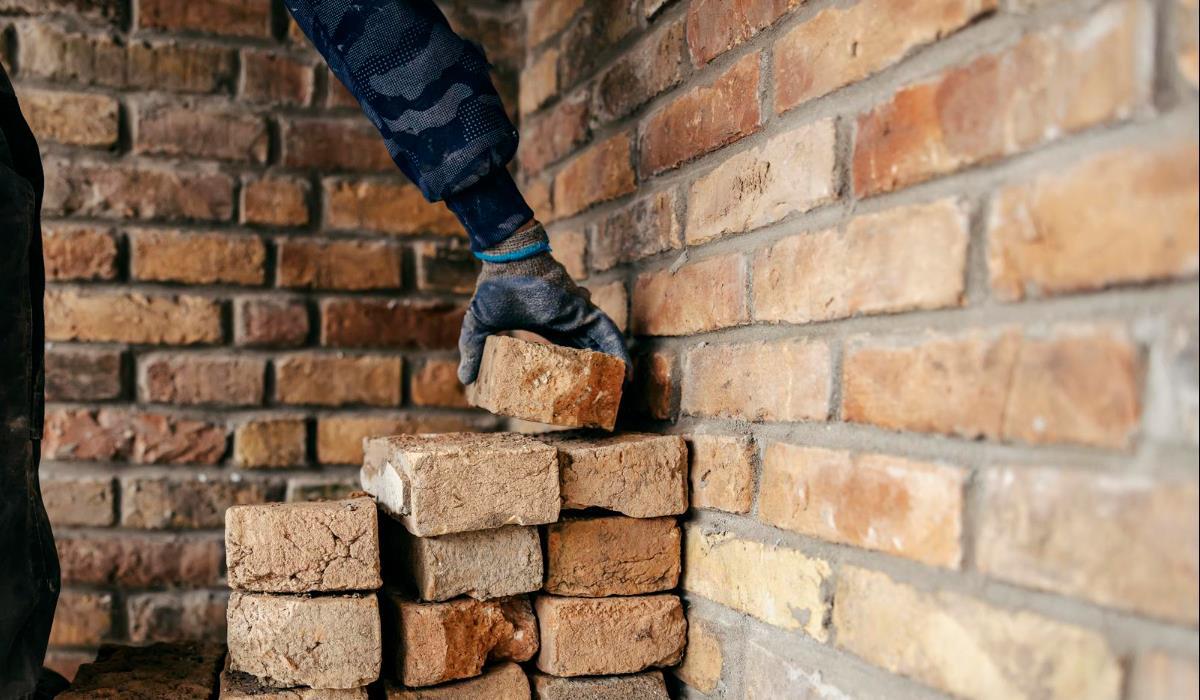The bricks in the wall are damaged by the ingress of water and expansion and contraction by frost, causing the outer layer to flake off. This process is called brick flaking, but it is not the only cause of damage. Damaged bricks in the wall are also the result of drilling, removal of installations (wiring or drainage pipes), or cracks caused by building subsidence. Sometimes it is also necessary to replace them for more mundane reasons, such as installing new ventilation grilles.
Damaged bricks due to weather conditions are called “flaking” bricks. Water penetrates into the wall through the rain, and during the winter frost causes the wall to expand, as a result of which the brick surface flakes over time. This usually happens on walls that are constantly exposed to the elements. In addition, soft standard bricks break down more than semi-heavy bricks.
Removing a brick from a wall: A step-by-step guide
Drilling holes

The first step in removing damaged brick is to drill a series of holes side by side as close together as possible. Drill holes around the damaged brick, making sure the masonry bit goes through the entire thickness of the brick, at least 100mm deep.
Gouging mortar
Then take a plug-in chisel and gently hammer it into the holes drilled earlier and along the mortar along the entire length of the damaged brick. This process will deprive the mortar of its adhesion to the damaged brick and prevent damage to the surrounding bricks.
Breaking a brick
The brick is now ready to be removed. Take a chisel and place it vertically on the damaged brick, about a third from the end of the brick, then hit the chisel hard with a hammer. This action breaks the brick. Repeat the same for the rest of the damaged brick to divide it into three parts.
Brick removal
Now take a long chisel and start breaking off individual sections of the brick, working on thirds. The brick will start to break off. You may need to position the long chisel at different angles to break up the brick.
Mortar cleaning
Once most of the brick has been removed, make sure the old mortar is removed from the top, bottom and sides surrounding the bricks. If you don’t, it will make it more difficult to install the new brick.
Adding mortar for the new brick
The new brick is now ready to be placed. To do this, mix four parts of sand to one part of cement until you get the consistency of whipped cream. Apply an even layer of mortar, at least 10 mm thick, to the bottom of the existing brick. Do the same with the top of the new brick, then the sides of the existing brick.
Insert a new brick

Gently press the new brick into place, being careful not to shift the bottom of the mortar with the new brick. Carefully place the new brick in place, taking care to remove excess mortar as the brick goes into place.
Finish the job
Using the grout trowel, gently push more grout into the joints until they are filled. Allow the grout to harden, then smooth the joint to complete the job. Rub gently with a soft brush or sponge for the final effect.
How many bricks can be safely removed from a wall?
If there is a group of broken bricks on the wall, it is easier to remove them in batches, usually it is safe to remove five. However, if the wall is a house wall, do not remove them on the sides of the windows or doors, as there are brick-based lintels above them around the doors and windows.
Can bricks be removed from a load-bearing wall?
Damaged bricks in load-bearing walls can be safely removed if done one brick at a time. Again, if there is a steel girder above the load-bearing wall, the same principle applies as for windows and doors. You can set up steel supports before starting to remove damaged bricks.
What bricks should be used to replace damaged bricks?

Before you start removing broken bricks, try to find bricks that match the rest. Most building stores will be able to help you fit the brick. Wrong bricks will be conspicuous and will look as bad as damaged.



